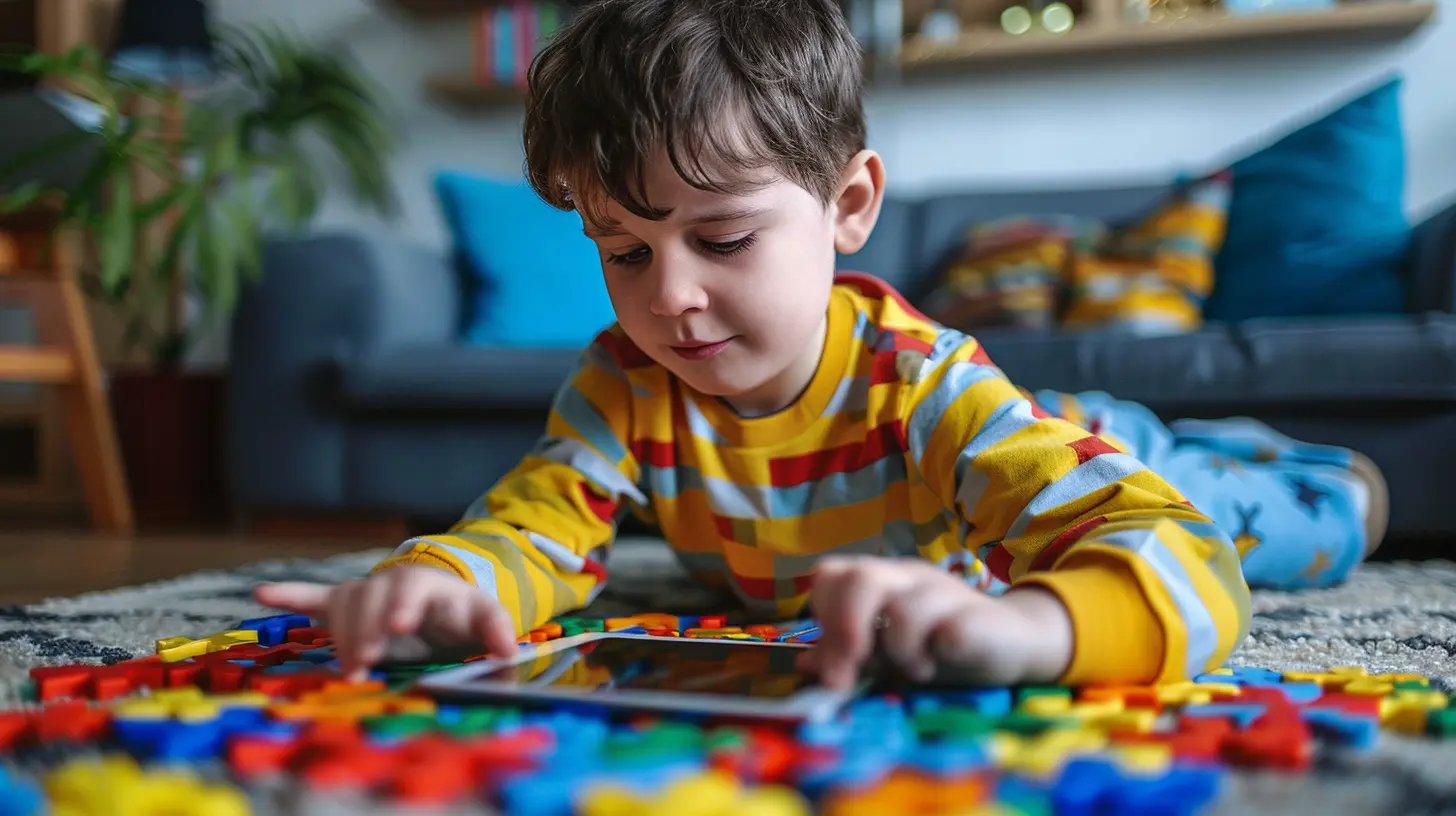Autism and Technology: The Role of Apps and Devices
9 November 2025
Technology isn't just changing the way we live—it's transforming the way we understand and support people on the autism spectrum. If you're a parent, teacher, therapist, or someone on the spectrum yourself, you've probably noticed how apps and gadgets have become powerful tools in your daily life. And guess what? We're just scratching the surface.
In this article, we’re diving headfirst into the world of autism and technology. We'll explore how smartphones, tablets, wearables, and even virtual reality are making meaningful connections possible, helping to build skills, confidence, and independence. So grab a cup of coffee (or tea!), and let’s chat about how tech is opening doors for individuals with autism.
What is Autism, in a Nutshell?
Before we jump into the techy stuff, let’s get on the same page.Autism Spectrum Disorder (ASD) is a developmental condition that affects how people communicate, interact, learn, and behave. It’s called a “spectrum” because the range—and intensity—of symptoms can vary wildly from one person to another. Some people may have trouble with verbal communication, while others might struggle with sensory input or social cues.
Think of autism like a different operating system. It’s not broken. It's not a glitch. It just runs differently.
Why is Technology So Impactful in Autism?
You might be wondering, “Why tech? Why now?” Well, here’s the deal.People with autism often find comfort in structure, predictability, and routines. Technology naturally fits into that world. It’s consistent. It’s non-judgmental. It waits patiently. For those who may struggle with traditional learning environments or social settings, devices and apps can offer a safe haven—a way to engage, learn, and express themselves at their own pace.
Plus, let’s face it—tech is everywhere. From toddlers swiping through story apps to teenagers navigating complex online games, screens have become second nature. Used the right way, they can be like a magical toolbox full of opportunities.
How Apps Are Changing the Game
Let’s talk apps. These aren’t just time-killers or distractions. Some apps out there are pure gold when it comes to supporting individuals with autism. Let's break it down.1. Communication Apps
For non-verbal or minimally verbal individuals, communication apps can be life-changing.Apps like Proloquo2Go, TouchChat, and Avaz act as dynamic communication boards. Users tap on icons or images to construct sentences, allowing them to express needs, thoughts, and feelings. Imagine not being able to say "I’m hungry" or "I need help"—and then one day, you can. That’s the kind of life-changing power we’re talking about.
2. Social Skills Apps
Navigating social interactions can be tricky. But apps like Social Express, Model Me Going Places, and Speech Blubs are here to help.These apps offer scenarios, role-playing games, and video modeling designed to teach everything from making eye contact to understanding sarcasm. Some even use avatars to make practicing feel like a game—because learning doesn’t have to be boring, right?
3. Visual Schedule and Task Management Apps
Routine and structure are crucial for many people with autism. That’s where visual schedule apps like Choiceworks, First Then Visual Schedule, and Time Timer shine.These tools help users understand what’s happening next, what’s expected of them, and how to transition smoothly from one activity to another. It’s like carrying a personal assistant in your pocket—one that never forgets and never nags.
4. Sensory and Relaxation Apps
Sensory overload is a real issue. Bright lights, loud noises, and crowded places can be overwhelming.Soothing apps like Fluidity, Relax Melodies, or Sensory Light Box can provide calm in the chaos. These apps offer gentle visual patterns, soft sounds, and tactile experiences that help regulate sensory input. They’re kind of like a digital security blanket—always there when you need a breather.
Gadgets and Devices: More Than Just Cool Toys
Now, let’s switch gears and talk about physical devices. We're not just talking about tablets or smartphones. We're talking wearables, VR, and robots. Yes, robots.Smartwatches for Safety and Independence
Wearables like the AngelSense GPS Tracker or Apple Watch can literally be lifesavers. For children and adults who tend to wander (a serious safety concern for many families), GPS trackers provide real-time location data and alerts.Smartwatches can also deliver gentle reminders, assist with daily routines, and even help manage anxiety through heart rate monitoring. It’s like having a guardian angel on your wrist.
Virtual Reality (VR) for Immersive Learning
What if you could practice going to a grocery store, school, or even a job interview—without ever leaving your room?That’s the magic of VR. Programs like Floreo and Virtual Reality Social Cognition Training use immersive simulations to teach life skills and social scenarios. Users can practice until they’re comfortable, building confidence without real-world pressure.
Robots as Learning Buddies
This may sound straight out of a sci-fi movie, but social robots like Milo and NAO are being used in therapy sessions and classrooms to engage individuals in interactive learning.Because these robots are consistent and predictable, they can be less intimidating than human interaction. They don’t judge. They don’t rush. And they make learning feel like playtime.
The Upsides: Why Parents and Experts Are Excited
Let’s count the wins.- Personalization: Tech tools can be customized to fit an individual's specific needs, interests, and learning style.
- Engagement: Many individuals on the spectrum are drawn to screens. Tech capitalizes on that natural interest to promote learning.
- Accessibility: Devices and apps can be used anywhere—at home, in school, or on the go.
- Cost-Effective: Compared to traditional therapies, many apps are affordable or even free.
It’s the kind of progress that wasn’t possible even just a decade ago.
The Flip Side: What to Watch Out For
Of course, it’s not all sunshine and rainbows. Like anything, technology has its downsides if not used mindfully.Screen Time Overload
Too much screen time can lead to isolation, reduced physical activity, and sleep issues. Balance is key. Think of tech as a spice—used right, it adds flavor; used too much, it overwhelms the dish.Dependency on Devices
Some users may become overly reliant on certain apps or gadgets, avoiding real-world communication or problem-solving. While the tech is a tool, it shouldn’t replace human interaction.Privacy and Data Concerns
Apps that collect data must be scrutinized. Always check privacy policies, and opt for tools that protect sensitive information, especially when it involves children.Tips for Choosing the Right Tech
Feeling a little overwhelmed by all the options? That’s okay. Here’s a quick cheat sheet:- ✅ Look for apps that are user-friendly and customizable
- ✅ Read reviews from other parents, therapists, or educators
- ✅ Try free versions before committing to paid features
- ✅ Prioritize quality over quantity
- ✅ Integrate apps into routines—not as replacements for human connections, but as supplements
And remember, no tech can replace the warmth of a hug, the patience of a teacher, or the encouragement of a parent. Use it wisely, and let it amplify—not replace—human support.
Real-Life Stories: When Tech Gets Personal
Let’s bring this closer to home.Sarah, a 9-year-old non-verbal girl with autism, started using a communication app. Within weeks, her meltdowns decreased dramatically—not because her challenges disappeared, but because she finally had a way to say, “I’m overwhelmed.”
Jake, a teenager who hated social situations, began using a VR program to practice job interviews. Fast-forward a few months, and he landed his first part-time gig at a coffee shop.
These are just two of thousands—maybe millions—of success stories. That’s the beauty of today’s tech. It adapts, evolves, and grows with you.
The Future of Autism and Technology
We’re only at the beginning of what’s possible. Artificial intelligence, machine learning, and advanced robotics are being integrated into autism therapy and education in revolutionary ways.Imagine a world where your device can predict meltdowns before they happen, where AI tutors adjust their speech patterns to match your needs, or where smart homes adapt lighting and sound to soothe sensory sensitivities. Sound far-fetched? It’s not. It’s already in development—and it’s coming fast.
The future isn’t just bright—it’s customized.
Final Thoughts
Autism and technology might seem like an unlikely pair at first glance. But the truth is, for many people on the spectrum, technology bridges gaps that once felt impossible to cross. It empowers. It opens doors. And it brings people closer to the world around them.Of course, it’s not a one-size-fits-all solution. But when chosen thoughtfully and used intentionally, the right apps and devices can be more than just tools—they can be lifelines.
So whether you’re a parent trying to support your child, a teacher striving to reach every student, or an adult on the spectrum navigating the world—embrace the tech. Let it work with you, not against you. And keep moving forward, one tap, swipe, or click at a time.
all images in this post were generated using AI tools
Category:
AutismAuthor:

Paulina Sanders
Discussion
rate this article
1 comments
Harrison Benson
What a thoughtful piece! It’s incredible how technology can bridge gaps for those with autism. Apps and devices truly create opportunities for growth, connection, and communication—making daily life just a bit easier and more enjoyable.
November 23, 2025 at 5:36 AM


